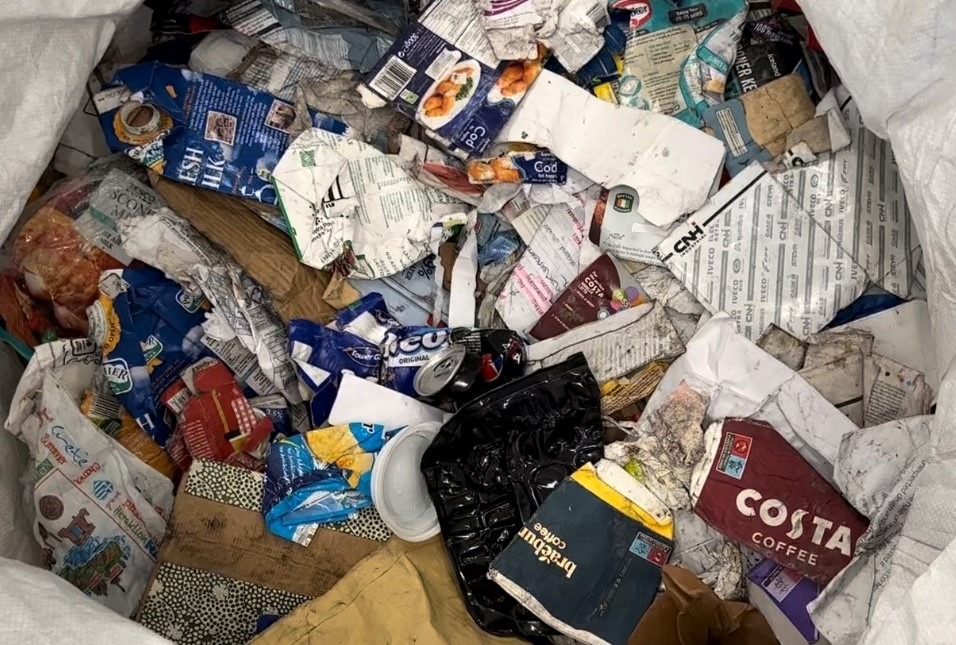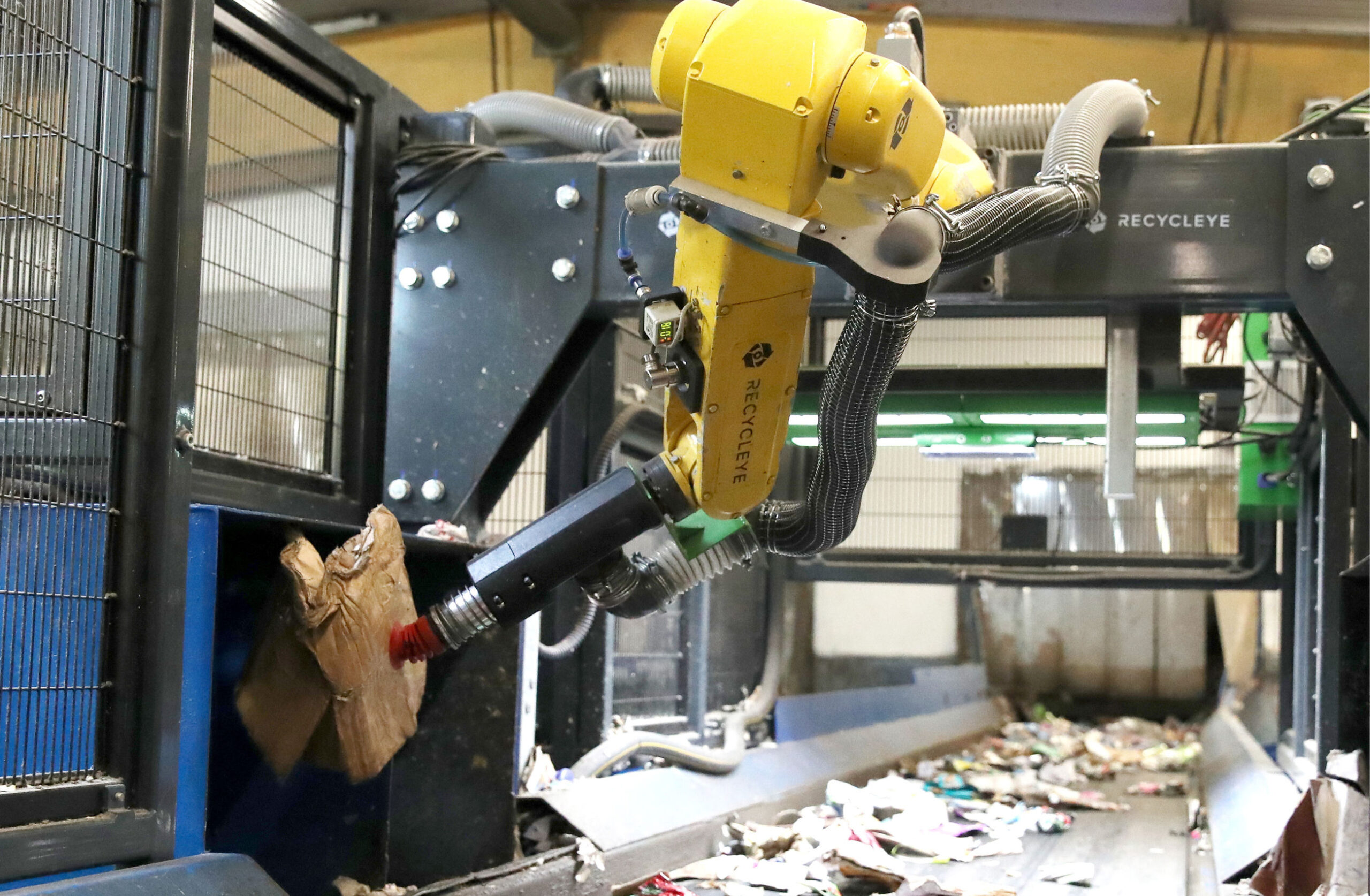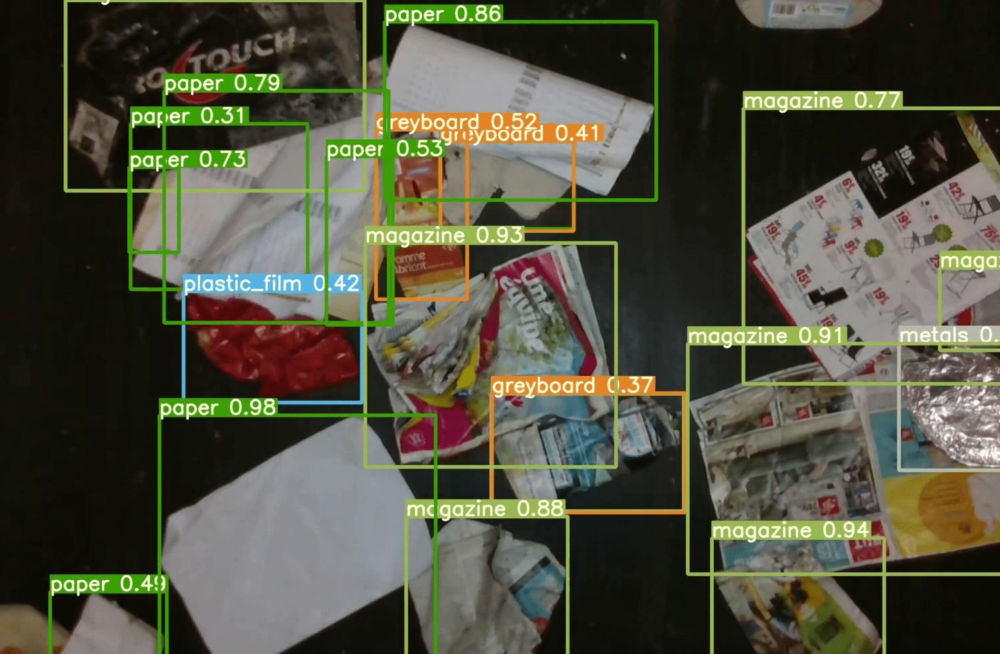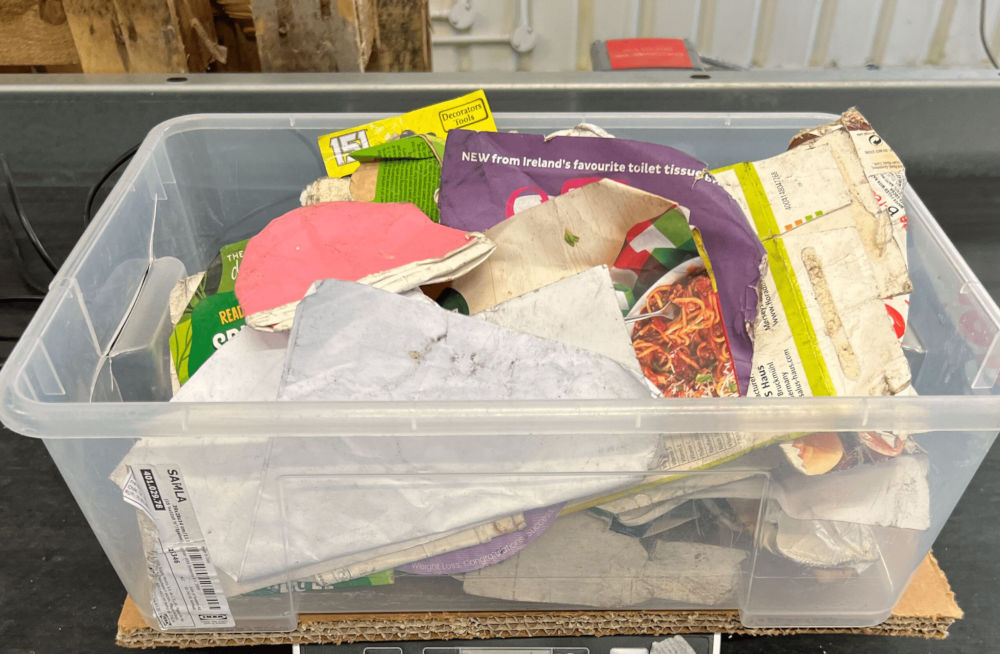A European-based client was looking to pick contaminants from their fibre line using a Recycleye waste robot.
The main concern was removing contaminants to increase the purity of the offtake, aiming to increase it from the levels achieved at their plant with manual picking.
The results we were able to achieve with the waste from this client are detailed below.

Fibre waste from the client before sorting.

A sample of sorted beverage cartons.
The Challenge
The client was considering investing in AI -powered robotic automation and wanted to investigate the potential for increasing purity on a fibre line.
We were aiming to extract cartons and plastics as separate categories, plus any other residual and aluminium.
Issues such as staff recruitment and retention, combined with a desire to invest in the latest technology were key considerations for applying an AI waste robot to fibre waste
Outcomes
Applying Recycleye Robotics to the client’s waste delivered some very positive results. Contamination of 3% was achieved, improved from 15%.
The contaminants identified and removed were metals, film and mixed plastics. We were particularly successful in identifying and picking beverage cartons, although the robot was less successful in identifying and picking metals.
Benefits
Using an AI waste robot to pick and sort material from a fibre line would deliver higher purity than manual sorting. It would also help to sort specific materials such as beverage cartons.
Based on the value created by using the robot to pick fibre, we calculated that a payback of less than two years (1.7) would be achieved. This gave a significant boost to the business case for investing in Recycleye Robotics.
The waste shown before picking.
“Fibre lines usually contain many types of contaminants so achieving 97% purity in this case is very pleasing.
The challenges faced on a fibre line include the high material volumes on wide belts, which can mean items such as Tetrapak are confused with paper and reduce purity”
– Paloma Aldeguer, Technical Sales Manager.

Recycleye robot picking card

Recycleye Vision identifying waste in a stream

A sample of contaminants picked from mixed waste
Applying AI to waste is not easy, due to the need to identify each object which is usually crushed, dirty and overlapping. But for this client, we successfully demonstrated the use of an AI waste robot.
- Purity achieved of 97%
- Residuals such as beverage cartons, film and mixed plastics consistently removed
- Investment case supported